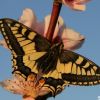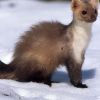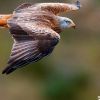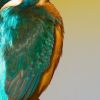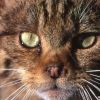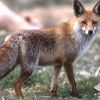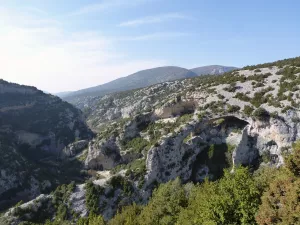Water plays an important role in the landscape of the Reserve; it gives shelter to the indigenous crab (Austropotamobius pallipes), trout (Salmo trutta) and the guardafuentes” or Pyrenean newt (Euproctus asper), an amphibian native to the Pyrenees which breathes through its skin, using the oxygen from the pure waters of its habitat. On the river banks, you can see herons (Ardea cinerea), kingfishers (Alcedo atthis) and whitethroated dippers (Cinclus cinclus), birds which also testify that the rivers are clean and unpolluted.
The rock, the other great stage for wild life, is home to Egyptian vultures (Neophron percnopterus), golden eagles (Aquila crhysaetos), peregrine falcons (Falco peregrinus) and eagle owls (Bubo bubo).
The majestic lammergeyer (Gypaetus barbatus), lord of the skies over the Guara, is an extremely beautiful bird of prey with penetrating yellow and red eyes, and a black mask. They are an endangered species, but the Reserve has several breeding pairs. It picks up bones abandoned by other carrion-eaters, and hurls them against rocks to break them up for eating.
Other birds of prey glide along the cliffs. The griffon vulture (Gyps fulvus) forms colonies in the rock walls, where the less experienced birds occupy the more exposed places. Towards dawn, they wait on cliff ledges for the sun to warm the air and create the currents to lift them upwards and glide. They push themselves off and hardly move their wings, rapidly gaining height with just a few imperceptible movements of their tails. They fly effor lesser until dusk, when they return to the colony to rest. This huge diversity of birds of prey is completed by an interesting group of forest species such as the sparrowhawk (Accipiter nisus), the goshawk (Accipiter gentilis) and the common buzzard (Buteo buteo), which allow the Reserve to be declared Special Area for the Protection of Birds.
The eco-system of the Mediterranean woods is one of the richest and most varied in fauna. The large amount of acorns growing there means that rodents prosper, and in turn, their predators, small carnivores such as the silent genet (Genetta genetta) and the marten (Martes foina), both nocturnal creatures.
The X-shaped prints of the fox (Vulpes vulpes) can be seen easily on paths and tracks. Its ability to adapt has prevented them from becoming extinct – indeed, it is the most common carnivore. Wild boar (Sus scrofa) also live here, and is the main animal to be hunted.



